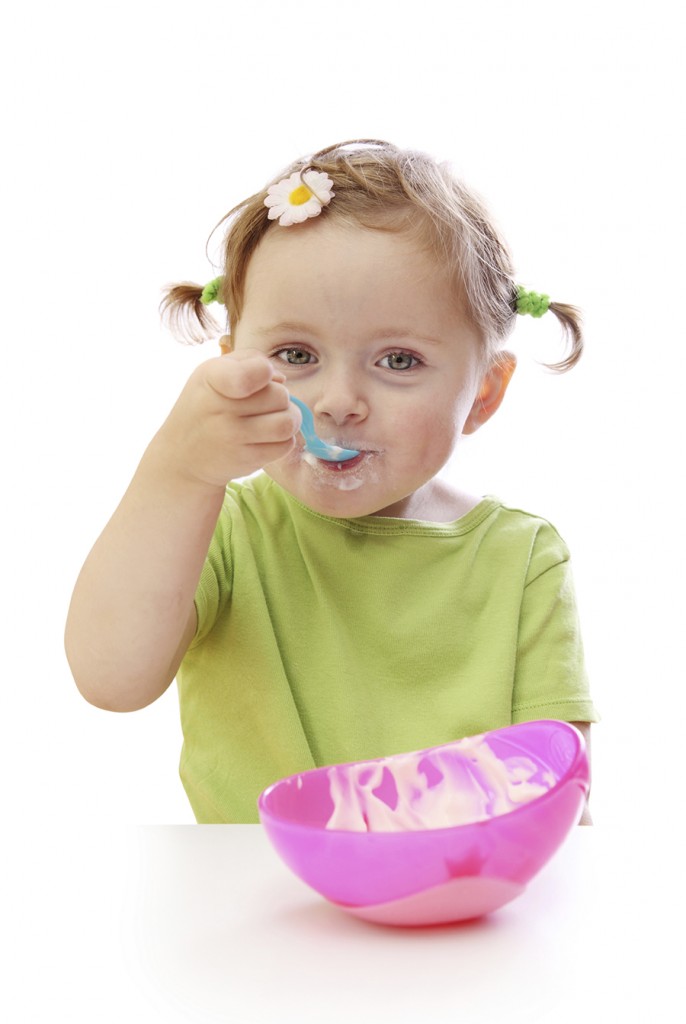 Like most of us, toddlers are suckers for sweet and salty foods. If you want proof, just walk down the snack aisle at the grocery store and look at the products targeted towards children. While the front of the packaging blares with pinks and greens and yellows, the back quietly lists the nutritional information in black and white: many of these brightly packaged foods that our toddlers love are chock-full of salt and sugar.
Like most of us, toddlers are suckers for sweet and salty foods. If you want proof, just walk down the snack aisle at the grocery store and look at the products targeted towards children. While the front of the packaging blares with pinks and greens and yellows, the back quietly lists the nutritional information in black and white: many of these brightly packaged foods that our toddlers love are chock-full of salt and sugar.
In a recent study, researchers from the Center for Disease Control and Prevention collected nutrition information on 1074 different US infant and toddler foods and analyzed both sugar and salt content. Overall, they found that many toddler foods were high in salt content and added sugar. ”Added sugar” is extra sugar that is added to foods for more flavor. This sugar also adds extra calories, without any nutritional benefit. Here are some specifics from the study:
The Bad News:
72 percent of pre-packaged toddler dinners were high in sodium content. Also, nearly one-third of these dinners contained added sugars. Importantly, a majority of cereal bars, breakfast pastries and fruit snacks contained at least one type of added sugar.
The Good News:
Nearly all infant foods were low in sodium and without added sugars. Most toddler snacks were also low in sodium, but these same snacks were stuffed with sugars.
So, why does it matter if your kids eat a lot of sugar and salt? They’ll burn it all off, won’t they? Well, maybe not… Here are some important facts:
- 23 percent of children aged 2 to 5 years are obese.
- 79 percent of children take in more than the recommended amount of sodium every day.
- Children who are obese and take in too much salt may be at increased risk of having high blood pressure and subsequent heart disease in the future.
The foods we put into our kids today could put them at risk for diseases in their future. For this reason, the American Academy of Pediatrics encourages parents to feed their children snacks with no added salt or sugar. As you can see from this research study, finding these types of snacks can be a challenge, but they are out there.
At this point, I imagine there are a few parents yelling at their computer. “My daughter would only eat hot dogs for a week!” “My son refuses to touch any yogurt that doesn’t come in a plastic sleeve!” “My husband and I work, and it is a miracle that we even get food into our kid’s mouth!” I certainly understand the “toddler-hunger-strike” and have experienced it with my own son. When he was 18 months old, he must have decided to become a vegetarian, because he would not eat any meat for over a month. And my wife and I have surely allowed him a cookie or two along the way. What happens occasionally is not as important as what happens the rest of the time. Here is a previous article by Dr. Lee with great tips for coping with a picky toddler.
As parents, we are the gatekeepers to our children’s plates. My wife likes to say, “Our pantry is our kid’s grocery store.” What we buy is what they eat. Though toddlerhood is certainly a challenge to all of us, the foods that we put in front of our kids really do matter. Our choices can set them up for future health or disease. Next time you are picking out a snack from the aisle, don’t be distracted by the brightly-colored designs and your child’s whining. Instead, turn to the back of the package and look through the nutritional facts table for the sodium and sugar content. Compare a few snacks and find the healthiest option. Or even better, skip the snack aisle altogether and buy some fresh fruit. It’s worth a try…





What are your recommendations per 100grams for salt & sugar? I brought cottage cheese for a protein hit at snack time and I hope this idea want exceed salt & sugars for my thirteen month old.